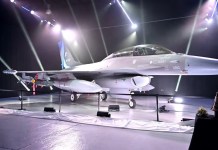NATO countries have dumped plans to acquire US-made Boeing aircraft to replace the alliance’s ageing fleet of surveillance planes, after Washington pulled out of the programme, the Netherlands said Thursday.
The Western military alliance announced in 2023 that members would acquire 6 Boeing Wedgetail jets as part of one of its “biggest-ever” joint purchases, aimed at bolstering its capabilities against Russia.
But the Dutch defence ministry said that a consortium of six NATO countries had now decided not to proceed with the Boeing purchase after the United States ended its involvement in July.
The move opens the door for the purchase of European-made aircraft as Washington’s allies look to bolster their own producers amid doubts over the reliability of US support under President Donald Trump.
“The withdrawal of the US demonstrates the importance of investing as much as possible in European industry,” deputy Dutch defence minister Gijs Tuinman said.

The current fleet of NATO AEW&C surveillance planes — dubbed the alliance’s “eyes in the sky” — will reach the end of their service in 2035.
NATO chief Mark Rutte said Thursday that he “will do everything to make sure that we speed up” the decision on their replacements.
The jets are operated centrally by the alliance out of its Geilenkirchen airbase in Germany, with intelligence shared among NATO’s 32 members.
Boeing E-7 Wedgetail stands as the world’s leading airborne early warning and control (AEW&C) platform. Based on the Boeing 737 Next Generation airframe, the E-7 carries the Northrop Grumman Multi-role Electronically Scanned Array (MESA) radar—nicknamed the “Wedgetail” for its distinctive top-mounted, wedge-shaped antenna.
This fixed AESA array delivers 360-degree coverage, tracking up to 3,000 targets simultaneously at ranges exceeding 370 km (230 miles) in all conditions.
The Wedgetail combines long-range surveillance radar, secondary radar, and tactical/strategic voice and data communications systems to provide an airborne early warning and control platform.
During a standard mission, the E-7A Wedgetail can cover more than four million square kilometres. It is capable of unlimited long-range deployment with in-flight refuelling.
© Agence France-Presse




